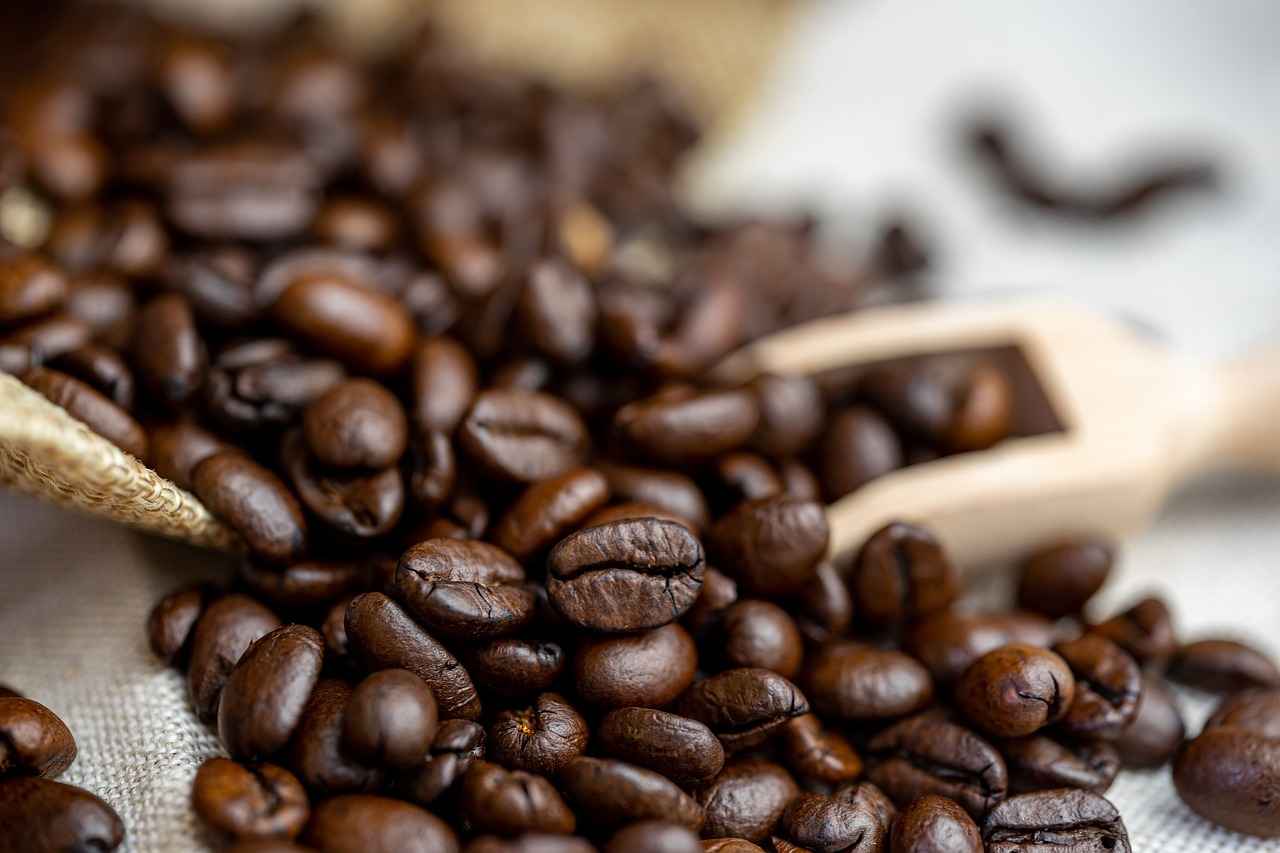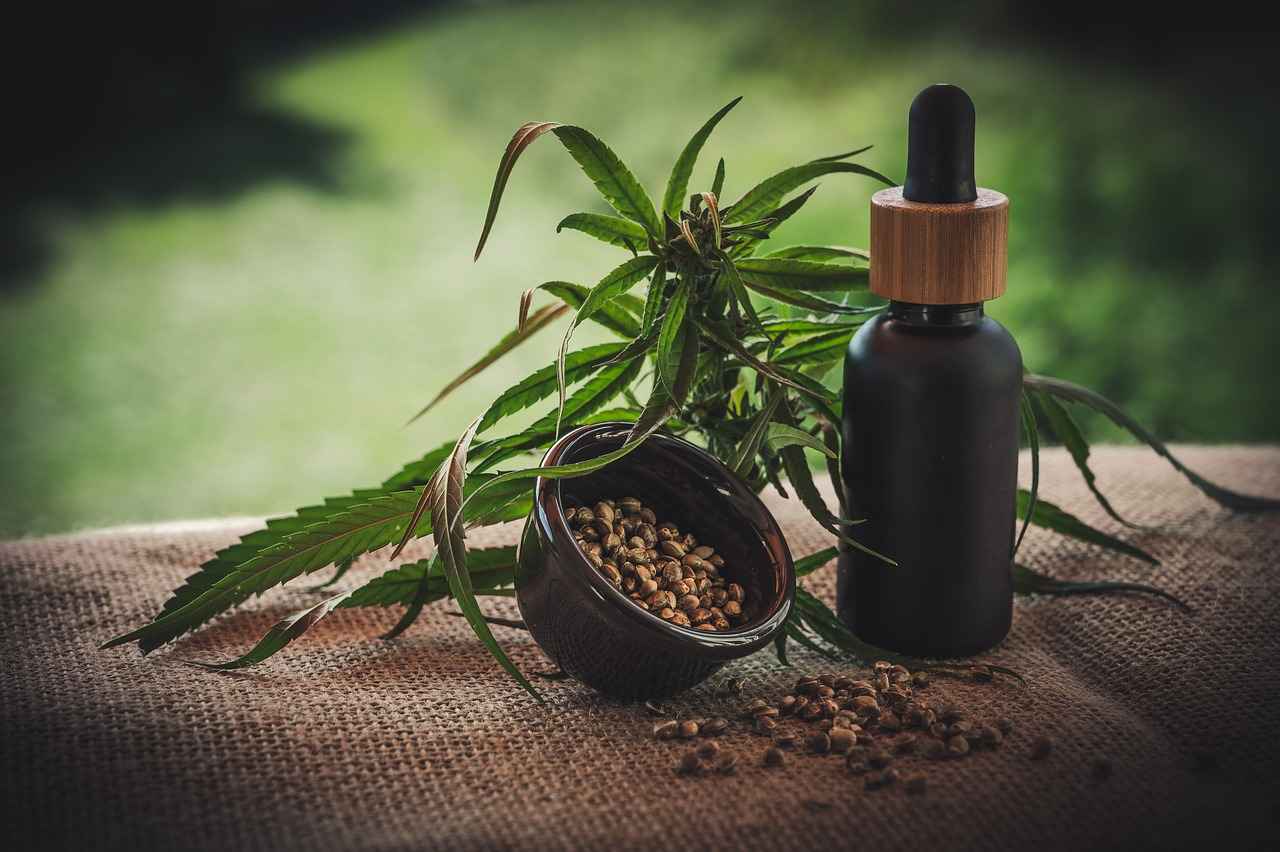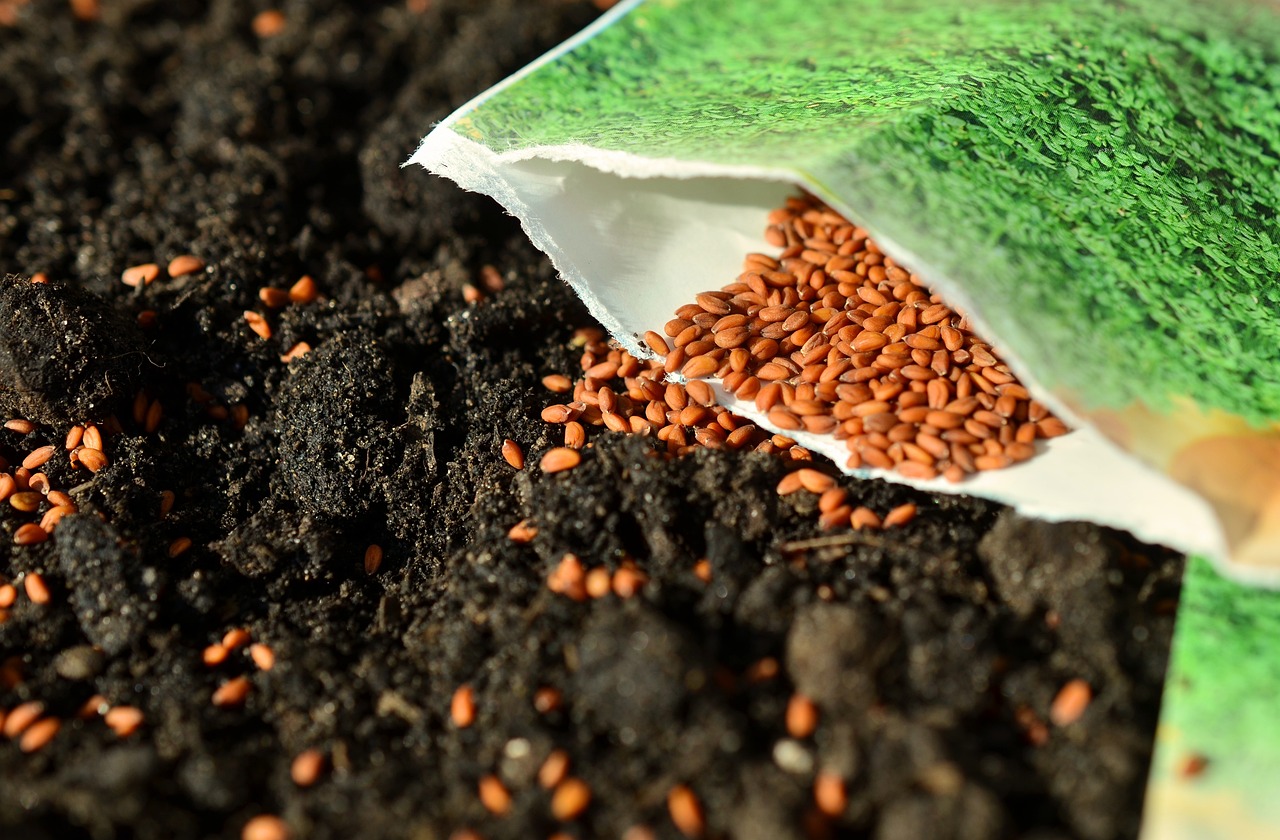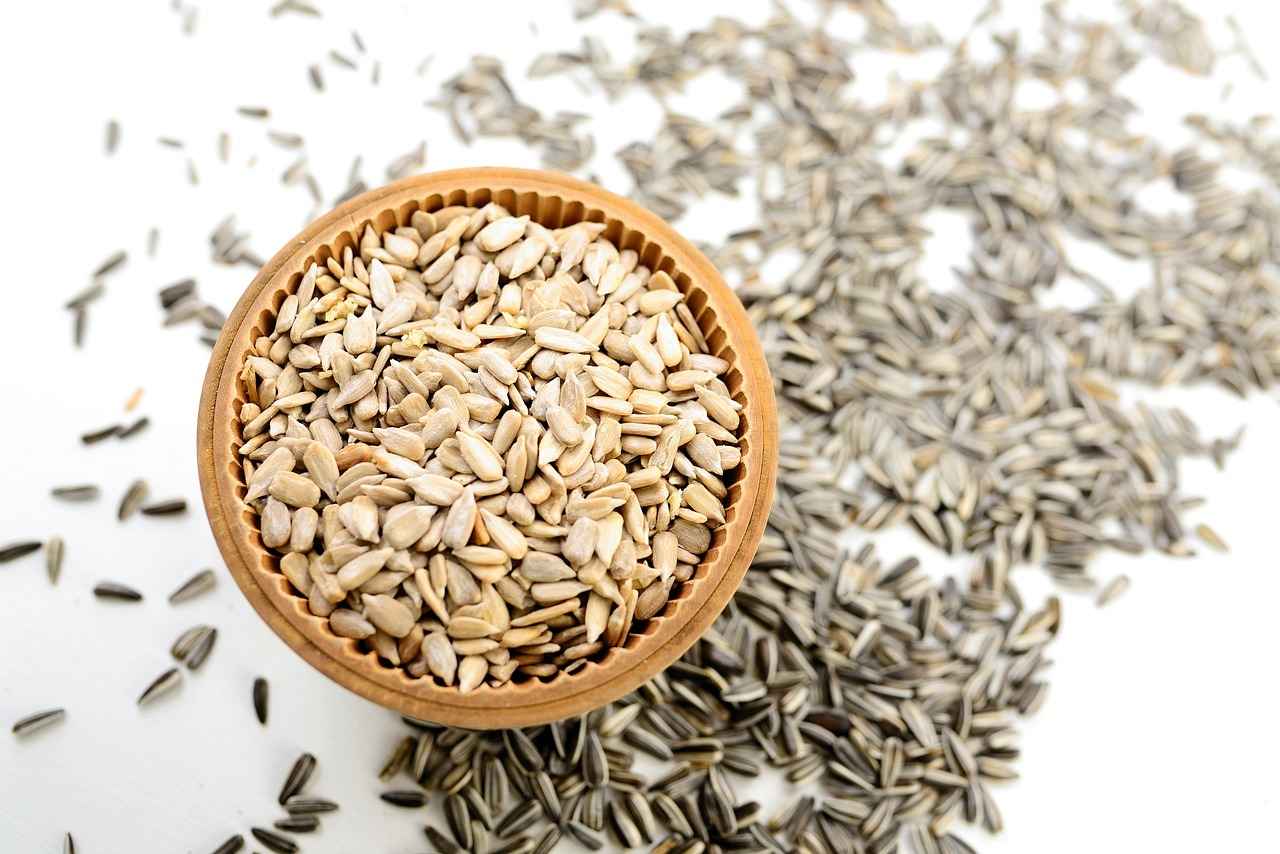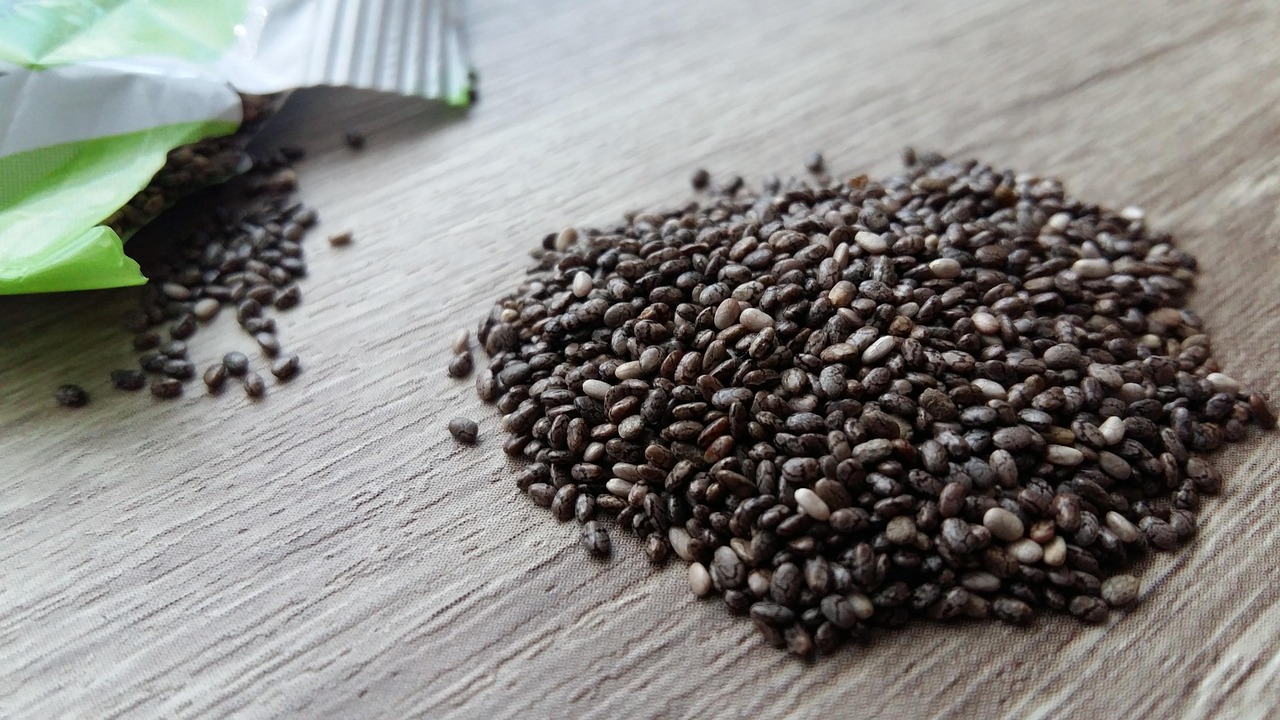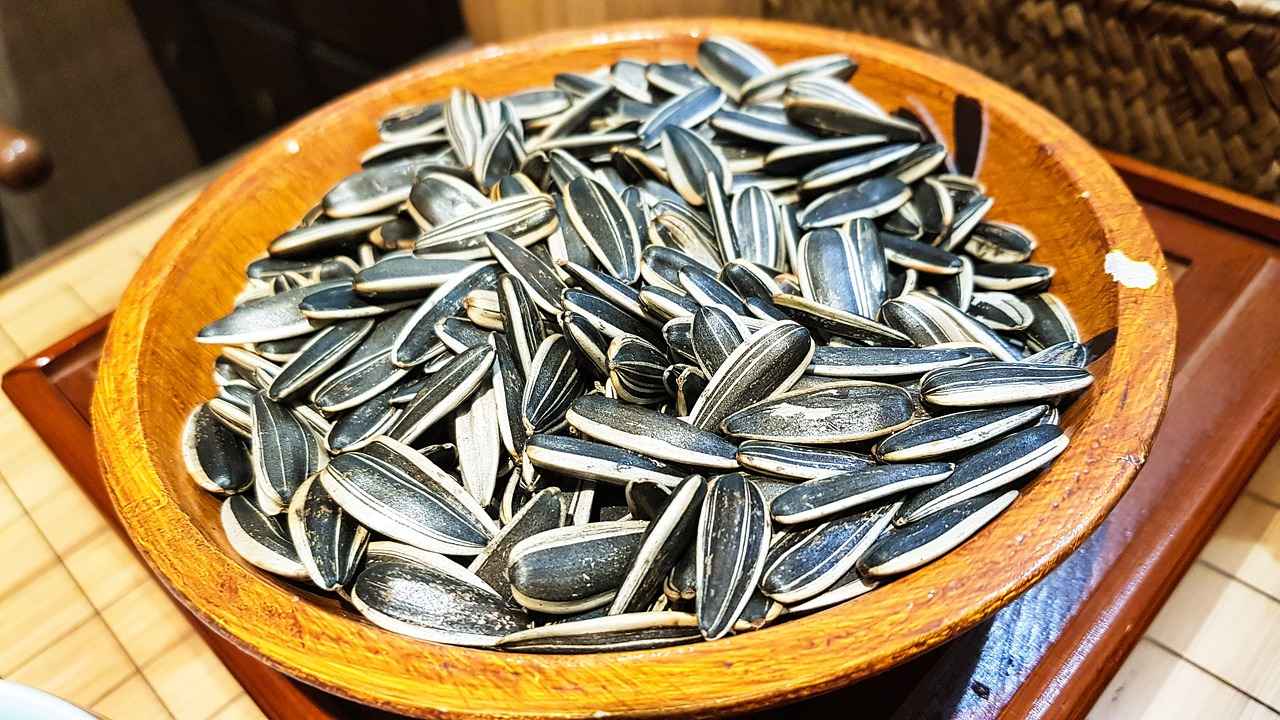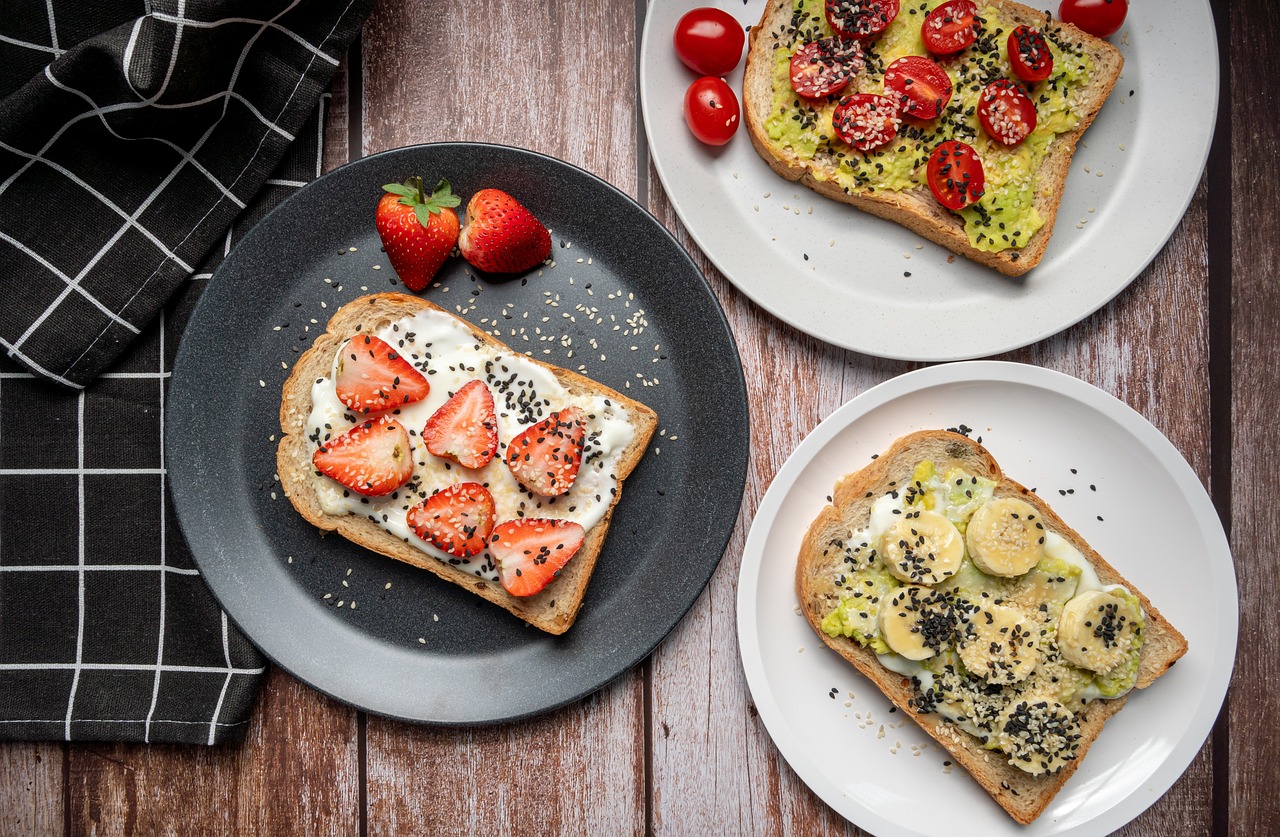Chia Seed Meal has gained significant attention in the health community due to its impressive nutritional profile and versatility in cooking. This article delves into what chia seed meal is, its numerous health benefits, and various ways to incorporate this superfood into your daily meals for enhanced nutrition and flavor.
Chia seed meal is essentially ground chia seeds, which are tiny black or white seeds derived from the Salvia hispanica plant. They are renowned for being a rich source of omega-3 fatty acids, dietary fiber, and protein. When compared to whole chia seeds, chia seed meal offers a more concentrated form of nutrients, making it easier to incorporate into various dishes.
The process of creating chia seed meal involves grinding whole chia seeds into a fine powder. This can be done using a blender, coffee grinder, or specialized seed grinder. Choosing high-quality chia seeds is essential, as they influence the flavor and nutritional value of the meal.
Chia seed meal is packed with nutrients that can support overall health. Here are some key benefits:
- Heart Health: Chia seed meal is rich in omega-3 fatty acids, which are known to promote cardiovascular health by reducing inflammation and lowering cholesterol levels.
- Digestive Wellness: The high fiber content aids in digestion, promoting regular bowel movements and enhancing gut health.
- Weight Management: The combination of fiber and protein can help you feel full longer, making it a great addition to a weight loss diet.
Chia seed meal is incredibly versatile and can be used in various culinary applications:
- Baking: Substitute chia seed meal in recipes for muffins, bread, and pancakes to boost their nutritional content.
- Thickening Agent: Use it as a thickener in sauces and soups without altering the flavor, enhancing texture instead.
- Smoothies and Shakes: Add chia seed meal to your smoothies for an extra nutritional punch and improved texture.
Yes, chia seed meal can often substitute for other ingredients in recipes:
- Egg Substitute: Chia seed meal can be used to make a vegan egg replacement, often referred to as a “chia egg.” Simply mix 1 tablespoon of chia seed meal with 2.5 tablespoons of water, let it sit until it thickens, and use it in your favorite recipes.
- Flour Replacement: In gluten-free baking, chia seed meal can replace a portion of flour, adding nutritional value.
There are countless ways to enjoy chia seed meal in your cooking. Here are some innovative recipe ideas:
- Chia Seed Meal Energy Bars: Combine oats, nut butter, honey, and chia seed meal for a nutritious snack that’s easy to make at home.
- Chia Seed Meal Pudding: Mix chia seed meal with your choice of milk and sweetener, and let it sit overnight for a delicious and healthy pudding. Experiment with flavors like vanilla, cocoa, or fruit puree.
Incorporating chia seed meal into your diet is a simple yet effective way to enhance your health. From boosting heart health to aiding digestion, the benefits are numerous. With its versatility in cooking, it’s easy to add this superfood to your meals and enjoy its rich nutritional profile.

What is Chia Seed Meal?
Chia Seed Meal: A Nutritional PowerhouseChia seed meal is an incredibly versatile ingredient derived from ground chia seeds, which are tiny black or white seeds from the Salvia hispanica plant. These seeds have gained immense popularity due to their rich nutritional profile, making them a favorite among health enthusiasts. But what exactly is chia seed meal, and how can it benefit your diet?
Chia seed meal is produced by grinding whole chia seeds into a fine powder. This process retains the seeds’ essential nutrients while making them easier to incorporate into various recipes. Chia seeds are renowned for their high content of omega-3 fatty acids, dietary fiber, and protein, making chia seed meal a superfood choice for those looking to enhance their nutritional intake.
When compared to whole chia seeds, chia seed meal offers similar health benefits but with a few distinctions. The grinding process increases the bioavailability of some nutrients, meaning your body can absorb them more efficiently. For instance, the fiber in chia seed meal can help regulate digestion and promote gut health more effectively than whole seeds, which may pass through the digestive system without being fully broken down.
The production of chia seed meal involves a straightforward process. First, whole chia seeds are cleaned to remove any impurities. Next, they are ground into a fine meal using various methods, such as a blender or a food processor. It’s important to choose high-quality seeds for grinding, as the nutritional content can vary significantly based on seed quality.
Chia seed meal is packed with nutrients that can contribute to overall health. Here are some key benefits:
- Omega-3 Fatty Acids: These essential fats are crucial for heart health, reducing inflammation, and supporting brain function.
- High Fiber Content: Chia seed meal contains both soluble and insoluble fiber, aiding in digestion and promoting satiety, which can be beneficial for weight management.
- Protein Source: With a good amount of plant-based protein, chia seed meal can help meet your daily protein needs, especially for those following a vegetarian or vegan diet.
Chia seed meal is incredibly versatile and can be used in various culinary applications:
- Baking: Substitute chia seed meal for flour in muffins, bread, and pancakes for added nutrition.
- Thickening Agent: Use it to thicken sauces and soups without compromising flavor.
- Egg Substitute: Mix chia seed meal with water to create a gel-like substance that can replace eggs in vegan recipes.
Incorporating chia seed meal into your diet can be both fun and delicious. Here are a couple of creative recipe ideas:
- Chia Seed Meal Energy Bars: Combine chia seed meal with nuts, seeds, and natural sweeteners to create nutritious energy bars.
- Chia Seed Meal Pudding: Mix chia seed meal with your choice of milk and sweeteners, then let it sit to thicken into a creamy pudding.
In summary, chia seed meal is a nutrient-dense ingredient that can enhance your culinary creations while providing numerous health benefits. Whether you’re looking to boost your omega-3 intake, improve digestion, or simply add a nutritious twist to your meals, chia seed meal is a fantastic option to consider.

How is Chia Seed Meal Made?
Understanding the production process of chia seed meal is essential for appreciating its quality and nutritional benefits. Chia seeds, native to Central and South America, are tiny black or white seeds packed with nutrients. When processed into meal, they become a versatile ingredient that can enhance various dishes. But how are these seeds transformed into meal, and why is it crucial to choose high-quality sources?
The process of making chia seed meal begins with the careful selection of high-quality chia seeds. These seeds should be organic and free from contaminants to ensure the best nutritional profile. Once the seeds are sourced, they undergo the following steps:
- Cleaning: The seeds are thoroughly cleaned to remove any dirt, debris, or foreign materials.
- Drying: Proper drying is essential to prevent mold growth and preserve the seeds’ nutritional qualities.
- Grinding: The dried seeds are then ground into a fine meal. This can be accomplished using various methods, including blenders, food processors, or specialized milling equipment. Each method may yield different textures and nutritional values.
- Packaging: Finally, the chia seed meal is packaged in airtight containers to maintain freshness and prevent exposure to light and moisture.
It is important to note that the grinding technique can significantly affect the nutritional value of the chia seed meal. For instance, finely ground meal may have a different absorption rate compared to coarsely ground meal. This can influence how the body utilizes the nutrients.
When purchasing chia seeds for grinding, it’s crucial to look for certifications such as organic and non-GMO. High-quality seeds not only provide better flavor but also ensure that you are getting the maximum health benefits. Lower-quality seeds may contain pesticides or other harmful substances that can compromise their nutritional value.
Different grinding techniques can yield varying results in terms of texture and nutrient availability. For example, using a blender can produce a finer meal, while a coffee grinder may give you a coarser texture, which could be preferable for certain recipes. It’s advisable to experiment with different methods to find what works best for your culinary needs.
To maintain the quality of your chia seed meal, proper storage is key. Store it in a cool, dark place in an airtight container to prevent oxidation and rancidity. If you buy in bulk, consider refrigerating or freezing the meal to extend its shelf life.
In summary, understanding the production process of chia seed meal helps you appreciate its quality and benefits. By choosing high-quality seeds and employing effective grinding and storage techniques, you can enjoy all the nutritional advantages this superfood has to offer.
Grinding Techniques for Chia Seeds
When it comes to incorporating chia seeds into your diet, understanding the grinding techniques is essential. The way you grind chia seeds can significantly impact both the texture and nutritional value of chia seed meal. In this section, we will explore the best practices for grinding chia seeds at home and the advantages of purchasing pre-ground options.
Chia seeds are tiny powerhouses of nutrition. However, whole chia seeds can pass through the digestive system without providing their full benefits. Grinding them enhances nutrient absorption and allows for easier incorporation into various dishes. Here are some key points to consider:
- Increased Nutrient Bioavailability: Grinding chia seeds releases their nutrients, making them more accessible to your body.
- Versatile Culinary Uses: Ground chia seeds can be used in a variety of recipes, from smoothies to baked goods.
- Improved Texture: Ground chia seeds have a finer texture, making them suitable for thickening and binding in recipes.
There are several methods to grind chia seeds at home, each with its pros and cons:
A blender is a convenient tool for grinding chia seeds. Here’s how to do it:
1. Add a small amount of chia seeds to the blender.2. Blend on high speed until you achieve a fine meal.3. Stop and scrape down the sides as needed for even grinding.
Pros: Quick and easy; can grind larger batches. Cons: May not achieve the finest texture.
A coffee grinder is another effective option for grinding chia seeds. Follow these steps:
1. Place chia seeds in the grinder, filling it no more than halfway.2. Pulse the grinder in short bursts until you reach the desired consistency.3. Be cautious not to overheat the seeds, as this can compromise their nutritional value.
Pros: Produces a finer meal; ideal for smaller quantities. Cons: Limited capacity; may require multiple batches.
If grinding at home seems daunting, consider purchasing pre-ground chia seed meal. Here are some factors to keep in mind:
- Freshness: Look for products with a recent grind date to ensure maximum freshness and nutrient retention.
- Storage: Choose vacuum-sealed packages to preserve the meal’s quality.
- Ingredient Quality: Opt for organic options to avoid pesticides and additives.
Proper storage is crucial to maintain the freshness and nutritional benefits of ground chia seed meal. Here are some tips:
- Store in an airtight container in a cool, dark place.
- For longer shelf life, consider refrigeration or freezing.
- Check for rancidity before use; fresh chia seed meal should have a mild, nutty aroma.
In summary, whether you choose to grind chia seeds at home or buy pre-ground options, understanding the techniques and storage methods can significantly enhance your culinary experience and nutritional intake. With these insights, you can confidently incorporate chia seed meal into your diet for improved health and flavor.
Using a Blender vs. Coffee Grinder
When it comes to making chia seed meal, the choice of tool can significantly impact the texture and nutritional quality of the final product. Both blenders and coffee grinders are popular options, but each has its own set of advantages and disadvantages that can affect your results. Understanding these differences can help you make an informed decision based on your specific needs.
- Blender: A blender is a versatile kitchen appliance that can handle a variety of tasks, including making smoothies, soups, and sauces. When it comes to grinding chia seeds, here are some pros and cons:
- Pros:
- Speed: Blenders typically grind seeds quickly, producing chia seed meal in a matter of seconds.
- Versatility: Besides grinding, a blender can be used for various other cooking tasks, making it a multi-functional tool.
- Capacity: Most blenders can accommodate larger quantities, allowing you to make more meal at once.
- Cons:
- Texture Control: Achieving a fine meal can be challenging, as blenders may leave larger particles if not monitored closely.
- Cleaning: Blenders can be more cumbersome to clean due to their larger size and multiple components.
- Coffee Grinder: A coffee grinder is specifically designed for grinding small quantities of dry ingredients. Here are the pros and cons of using a coffee grinder for chia seeds:
- Pros:
- Fine Grind: Coffee grinders excel at producing a fine, consistent meal, which is ideal for recipes requiring a smooth texture.
- Ease of Use: They are generally easy to operate, requiring just a few seconds to achieve the desired consistency.
- Cons:
- Capacity Limitations: Most coffee grinders have a smaller capacity, which means you may have to grind in batches.
- Single Function: Unlike blenders, coffee grinders are limited to grinding, which may not justify their purchase if you don’t drink coffee.
In conclusion, the choice between a blender and a coffee grinder for making chia seed meal largely depends on your personal preferences and cooking habits. If you value versatility and speed, a blender might be the better option. However, if you prioritize a fine texture and control over the grind, a coffee grinder may be the way to go. Ultimately, both tools can effectively produce chia seed meal, so consider your specific needs and cooking style when making your decision.
Storing Ground Chia Seed Meal
is essential for maintaining its freshness and nutritional benefits. Chia seed meal, derived from ground chia seeds, is known for its rich nutrient profile, including omega-3 fatty acids, fiber, and protein. However, improper storage can lead to a decline in its quality and effectiveness. Here, we will explore the best practices for storing chia seed meal to ensure it remains a valuable addition to your diet.
Chia seed meal is highly perishable due to its oil content. When exposed to light, heat, or moisture, the oils can oxidize, leading to rancidity. This not only affects the taste but also diminishes the meal’s nutritional value. Therefore, understanding how to store chia seed meal properly is crucial for preserving its health benefits.
- Keep it in an Airtight Container: Store chia seed meal in a sealed container to prevent exposure to air and moisture. Glass jars or BPA-free plastic containers work well.
- Store in a Cool, Dark Place: Choose a cool, dark location such as a pantry or cupboard away from direct sunlight and heat sources. This helps to slow down the oxidation process.
- Refrigeration for Extended Freshness: For longer storage, consider refrigerating your chia seed meal. This can significantly extend its shelf life and maintain its nutritional integrity.
- Freezing for Long-Term Storage: If you buy chia seed meal in bulk, freezing is an excellent option. Place it in a freezer-safe container or bag, and it can last for several months without losing its quality.
When stored properly, ground chia seed meal can last:
- At Room Temperature: 1-3 months
- In the Refrigerator: 6-12 months
- In the Freezer: Up to 2 years
It’s important to regularly check your chia seed meal for signs of spoilage. If you notice:
- Off Smell: A rancid or unpleasant odor indicates that the oils have gone bad.
- Change in Color: If the meal appears darker or has an unusual hue, it may no longer be fresh.
- Unpleasant Taste: A bitter or sour taste suggests spoilage.
By following these storage guidelines, you can ensure that your ground chia seed meal remains fresh and nutritious. Proper storage not only helps maintain its health benefits but also enhances your culinary experiences by allowing you to enjoy its versatility in various dishes. Whether you use it in smoothies, baked goods, or as a thickening agent, keeping your chia seed meal well-stored will maximize its potential in your diet.
Choosing Quality Chia Seeds
When it comes to enhancing your meals with chia seeds, the quality of the seeds you choose is paramount. Selecting high-quality chia seeds is essential for optimal meal preparation. This article will guide you through the key factors to consider when purchasing chia seeds for grinding, ensuring you get the best product for your culinary needs.
- Origin: Always check the origin of the chia seeds. Seeds sourced from regions with optimal growing conditions, such as South America, tend to have better quality and flavor.
- Color and Appearance: High-quality chia seeds should have a consistent color, typically black or white. Avoid seeds that appear dull or have an uneven color, as this may indicate poor quality.
- Freshness: Look for packaging that includes a harvest date or expiration date. Fresh seeds provide better flavor and nutritional benefits.
- Organic Certification: Choosing organic chia seeds ensures that the seeds are grown without harmful pesticides or chemicals, making them a healthier option.
- Texture: The seeds should feel firm and intact. Avoid any that are crushed or broken, as this may affect their quality and nutritional value.
High-quality chia seeds are packed with essential nutrients. They are an excellent source of omega-3 fatty acids, fiber, and protein. When grinding chia seeds, ensure that you retain these nutrients for maximum health benefits. Poor-quality seeds may lack the necessary nutrients and can lead to suboptimal health outcomes.
When selecting chia seeds, consider whether to buy in bulk or pre-packaged. Bulk purchases often provide better value and allow you to inspect the seeds for quality before buying. However, pre-packaged seeds can offer convenience and are often vacuum-sealed to maintain freshness.
Opt for reputable health food stores, organic markets, or trusted online retailers. Ensure that the seller provides adequate information regarding the source and quality of their chia seeds. Reading customer reviews can also help gauge the quality and reliability of the product.
Once you’ve selected high-quality chia seeds, proper storage is crucial to maintain their freshness. Store them in an airtight container in a cool, dark place, such as a pantry or refrigerator. This will help prevent oxidation and preserve their nutritional benefits.
In summary, when it comes to choosing quality chia seeds, pay attention to their origin, appearance, freshness, and whether they are organic. By taking these factors into account, you can ensure that you are selecting the best seeds for grinding and incorporating into your meals. This careful selection not only enhances the flavor of your dishes but also maximizes the health benefits of this remarkable superfood.

What Are the Nutritional Benefits of Chia Seed Meal?
Chia seed meal is a nutrient-dense superfood that has gained popularity for its remarkable health benefits. Packed with essential nutrients, it serves as an excellent addition to any diet. Understanding the nutritional profile of chia seed meal can help you appreciate its role in promoting overall health.
One of the standout features of chia seed meal is its high content of omega-3 fatty acids. These healthy fats are crucial for maintaining a healthy heart. Research indicates that omega-3s can help reduce inflammation, lower blood pressure, and decrease the risk of heart disease. By incorporating chia seed meal into your daily diet, you can support cardiovascular health and enhance overall well-being.
Chia seed meal is an excellent source of dietary fiber, which is essential for digestive health. A single serving can provide a significant portion of your daily fiber needs. Fiber aids in digestion by promoting regular bowel movements and preventing constipation. Furthermore, it helps maintain a healthy gut microbiome, which is vital for nutrient absorption and immune function. Adding chia seed meal to your meals can enhance digestive wellness and improve gut health.
For those looking to manage their weight, chia seed meal can be a valuable ally. The combination of fiber and protein in chia seed meal promotes a feeling of fullness, which can help reduce overall calorie intake. When consumed, chia seeds absorb water and expand in the stomach, creating a gel-like substance that delays hunger pangs. This property makes chia seed meal an effective tool for those aiming to control their appetite and maintain a healthy weight.
Chia seed meal is also rich in antioxidants, which play a crucial role in protecting the body from oxidative stress. Antioxidants help combat free radicals, which can lead to chronic diseases and accelerate aging. By including chia seed meal in your diet, you can boost your antioxidant intake and support your body’s natural defense mechanisms.
In addition to its macronutrient profile, chia seed meal is packed with essential vitamins and minerals. It contains significant amounts of calcium, magnesium, phosphorus, and zinc. These nutrients are vital for bone health, energy production, and immune function. Incorporating chia seed meal into your meals can help ensure you receive a well-rounded nutrient intake.
- Add to Smoothies: Blend chia seed meal into your favorite smoothies for a nutrient boost.
- Use in Baking: Substitute chia seed meal in recipes for muffins, pancakes, or bread.
- Mix into Yogurt: Stir chia seed meal into yogurt or oatmeal for added texture and nutrition.
- Thicken Soups and Sauces: Use chia seed meal as a natural thickening agent in your cooking.
In summary, chia seed meal is a versatile and nutrient-rich ingredient that can significantly enhance your diet. With its impressive health benefits, including support for heart health, digestive wellness, weight management, and antioxidant properties, it is no wonder that chia seed meal has become a staple in many health-conscious kitchens. By incorporating this superfood into your meals, you can enjoy its numerous advantages and contribute to your overall health.
Omega-3 Fatty Acids and Heart Health
Omega-3 fatty acids play a crucial role in maintaining cardiovascular health, making them an essential component of a balanced diet. These polyunsaturated fats are known for their heart-protective properties, helping to reduce inflammation and lower the risk of heart disease. One of the most accessible sources of omega-3s is chia seed meal, which can easily be incorporated into various meals.
Omega-3 fatty acids, particularly EPA (eicosapentaenoic acid) and DHA (docosahexaenoic acid), are renowned for their ability to promote heart health. They work by:
- Reducing Triglycerides: High levels of triglycerides can increase the risk of heart disease. Omega-3s help lower these levels.
- Lowering Blood Pressure: Regular consumption of omega-3 fatty acids can contribute to lower blood pressure, which is vital for heart health.
- Decreasing Blood Clotting: These fatty acids can reduce the likelihood of blood clots, which can lead to heart attacks.
- Reducing Inflammation: Omega-3s have strong anti-inflammatory properties, which can help mitigate chronic inflammation linked to heart disease.
Chia seed meal is an excellent source of omega-3 fatty acids, particularly alpha-linolenic acid (ALA). When consumed, ALA can be converted into EPA and DHA in the body, albeit at a lower efficiency. Here are some ways chia seed meal supports heart health:
- High Fiber Content: Chia seed meal is rich in dietary fiber, which can help lower cholesterol levels and improve overall heart health.
- Antioxidant Properties: Chia seeds contain antioxidants that combat oxidative stress, a factor that can lead to heart disease.
- Versatile Ingredient: Chia seed meal can be easily added to smoothies, baked goods, and salads, making it simple to boost your omega-3 intake.
Adding chia seed meal to your diet is straightforward. Here are some practical tips:
- Smoothies: Blend chia seed meal into your favorite smoothie for a nutrient boost.
- Baking: Substitute a portion of flour with chia seed meal in recipes for muffins or bread.
- Salads: Sprinkle chia seed meal over salads for added texture and nutrition.
While omega-3 fatty acids are generally safe for most people, excessive intake can lead to potential side effects, such as:
- Bleeding Risks: High doses can increase the risk of bleeding, especially for individuals on blood-thinning medications.
- Digestive Issues: Some may experience digestive discomfort, including bloating or diarrhea.
In conclusion, incorporating chia seed meal into your diet offers an easy and effective way to increase your omega-3 fatty acid intake, supporting heart health and overall well-being. By understanding the benefits and practical uses of this superfood, you can make informed dietary choices that contribute positively to your health.
High Fiber Content and Digestive Health
The fiber found in chia seed meal is a powerful ally for promoting digestive health. With its unique combination of soluble and insoluble fibers, chia seed meal can significantly enhance your gut function. But how exactly does it work, and why should you consider adding it to your meals?
The soluble fiber in chia seed meal absorbs water, forming a gel-like consistency. This process slows down digestion, which can help you feel fuller for longer, thereby aiding in weight management. Additionally, this gel-like substance can help regulate blood sugar levels, making chia seed meal an excellent choice for those looking to maintain steady energy throughout the day.
On the other hand, the insoluble fiber in chia seed meal adds bulk to your stool, promoting regular bowel movements. This is particularly important for preventing constipation and ensuring a healthy digestive tract. By incorporating chia seed meal into your diet, you can support the natural processes of your body to keep your digestive system functioning optimally.
Moreover, the fiber in chia seed meal acts as a prebiotic, feeding the beneficial bacteria in your gut. A healthy gut microbiome is crucial for overall health as it plays a role in nutrient absorption, immune function, and even mental health. By promoting the growth of these good bacteria, chia seed meal can contribute to a balanced gut environment.
So, how can you easily incorporate chia seed meal into your meals? Here are some practical tips:
- Add to Smoothies: Blend a tablespoon of chia seed meal into your morning smoothie for an added fiber boost.
- Mix into Yogurt: Stir it into yogurt or oatmeal for a nutritious breakfast or snack.
- Baking: Substitute a portion of flour in your baking recipes with chia seed meal to enhance fiber content.
- Thickening Agent: Use chia seed meal as a thickener in soups and sauces without altering the flavor.
In conclusion, the high fiber content of chia seed meal not only aids digestion but also promotes overall gut health. By incorporating this superfood into your diet, you can enjoy numerous health benefits while enhancing the nutritional profile of your meals. Whether you are looking to improve your digestive function, manage your weight, or simply enjoy a healthy diet, chia seed meal is a versatile and effective addition to consider.
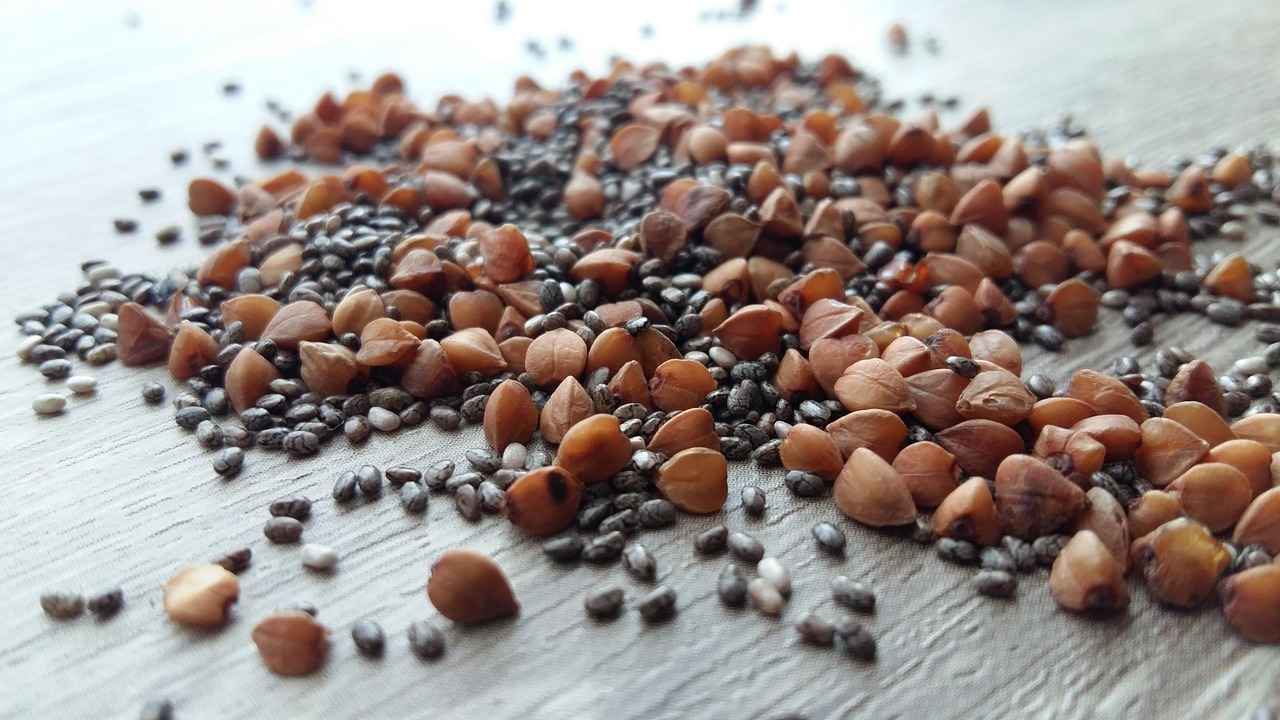
How Can You Use Chia Seed Meal in Cooking?
Chia seed meal is an incredibly versatile ingredient that can elevate your cooking and baking. With its rich nutritional profile, it not only enhances the flavor of dishes but also adds a significant health boost. In this section, we will explore various creative and practical ways to incorporate chia seed meal into your culinary repertoire.
Baking with chia seed meal can transform ordinary recipes into nutrient-dense delights. Here are some ways to use it:
- Muffins: Substitute a portion of flour with chia seed meal to increase fiber and protein content. This will result in moist, flavorful muffins.
- Bread: Adding chia seed meal to bread dough not only improves texture but also enhances the nutritional value, making your bread a wholesome choice.
- Pancakes: Mix chia seed meal into your pancake batter for a delightful twist. It adds a nutty flavor and a boost of omega-3 fatty acids.
Chia seed meal can also serve as a natural thickener in various dishes. Here’s how:
- Soups: Stir in chia seed meal to thicken soups without compromising flavor. It blends seamlessly and adds a creamy texture.
- Sauces: Incorporate chia seed meal into sauces to achieve the desired consistency while enriching the sauce with nutrients.
One of the most exciting aspects of chia seed meal is its ability to replace traditional ingredients. Here are some substitutions:
- Egg Substitute: For a vegan alternative, mix 1 tablespoon of chia seed meal with 2.5 tablespoons of water. Let it sit for a few minutes until it forms a gel-like consistency, perfect for binding in recipes.
- Flour Substitute: When baking, you can replace a portion of flour with chia seed meal to boost the nutritional content of your baked goods.
- Dairy Substitute: Add chia seed meal to smoothies or shakes to create a creamy texture without using dairy products.
Smoothies and shakes are ideal for adding chia seed meal, enhancing both texture and nutrition. Here’s how:
- Texture Enhancement: Chia seed meal thickens smoothies, giving them a satisfying consistency.
- Nutritional Boost: Adding chia seed meal provides a rich source of fiber, protein, and healthy fats, making your smoothies more filling and nutritious.
For those looking to experiment, here are some innovative recipe ideas:
- Chia Seed Meal Energy Bars: Combine chia seed meal with oats, nut butter, and honey to create homemade energy bars that are perfect for on-the-go snacking.
- Chia Seed Meal Pudding: Mix chia seed meal with your choice of milk and sweetener, let it sit overnight, and enjoy a delicious pudding that can be customized with various flavors and toppings.
Incorporating chia seed meal into your cooking not only enhances flavor but also adds a wealth of nutritional benefits. With its versatility, you can easily adapt it to fit into many recipes, making it a valuable addition to your kitchen.
In Baking: Muffins, Bread, and Pancakes
Incorporating chia seed meal into your baking can transform ordinary recipes into nutritious delights. This versatile ingredient not only adds a unique texture but also enhances the nutritional profile of muffins, bread, and pancakes. Let’s explore how you can effectively substitute chia seed meal in your favorite baked goods for a healthier twist.
Chia seed meal is a powerhouse of nutrients, including omega-3 fatty acids, protein, and fiber. By using chia seed meal in your baking, you can boost the overall health benefits of your treats. Its ability to absorb liquid makes it an excellent binding agent, which is particularly useful for gluten-free baking.
When baking muffins, you can replace up to 25% of the flour with chia seed meal. This not only adds moisture but also contributes to a denser texture. Here’s a simple guideline:
- For every cup of flour, substitute ¼ cup of chia seed meal.
- Adjust the liquid ingredients slightly, as chia seed meal absorbs moisture.
Experiment with flavors by adding fruits or spices that complement the nutty taste of chia.
In bread recipes, chia seed meal can be a game-changer. It acts as a natural thickener and can improve the bread’s shelf life due to its moisture retention properties. To incorporate it:
- Replace up to ¼ of the flour with chia seed meal.
- Add a little extra water or milk to the dough to account for the chia’s absorbent nature.
This substitution not only enriches the flavor but also enhances the bread’s nutritional value, making it a more wholesome option.
Pancakes are another delightful way to include chia seed meal in your breakfast. You can substitute chia seed meal for flour in a similar manner:
- Use ¼ cup of chia seed meal for each cup of flour.
- Mix it with the dry ingredients to ensure even distribution.
Chia seed meal can also be used to create a chia egg as a vegan alternative to eggs. To make a chia egg, mix 1 tablespoon of chia seed meal with 2.5 tablespoons of water, let it sit for about 10 minutes until it gels, and then use it in your pancake batter. This will add extra fiber and protein to your breakfast!
Here are some practical tips to keep in mind when baking with chia seed meal:
- Start Small: If you’re new to using chia seed meal, begin by substituting a small portion of flour and gradually increase as you become comfortable with the flavor and texture.
- Monitor Liquid Content: Since chia seed meal absorbs a lot of moisture, be prepared to adjust the liquid ingredients in your recipes.
- Store Properly: Keep your chia seed meal in an airtight container in a cool, dark place to maintain its freshness and nutritional value.
Incorporating chia seed meal into your baking not only enhances the nutritional value but also adds a delightful texture to your favorite recipes. Whether you’re making muffins, bread, or pancakes, these substitutions can help you create healthier versions of your beloved baked goods.
As a Thickening Agent in Sauces and Soups
Chia seed meal is not just a nutritious addition to your diet; it can also serve as an effective thickening agent in various culinary applications. When incorporated into sauces and soups, chia seed meal can significantly enhance the texture without compromising the flavor of your dishes. This article will guide you on how to use chia seed meal effectively in your cooking.
Chia seed meal is derived from ground chia seeds, which are packed with soluble fiber. This fiber absorbs liquid and expands, creating a gel-like consistency that is perfect for thickening. Unlike traditional thickeners such as cornstarch or flour, chia seed meal offers additional nutritional benefits, including omega-3 fatty acids, protein, and antioxidants.
- Start with a Small Amount: Begin by adding 1 to 2 tablespoons of chia seed meal to your sauce. This will allow you to gauge the thickening effect without overwhelming the flavor.
- Mix with Liquid: To activate the thickening properties, mix the chia seed meal with a small amount of liquid (broth, stock, or water) before adding it to the sauce.
- Stir Constantly: Once added, stir the sauce continuously to ensure even distribution and prevent clumping.
- Simmer for Best Results: Allow the sauce to simmer for a few minutes. This will enable the chia seed meal to absorb the liquid and thicken the sauce effectively.
Using chia seed meal in soups is equally straightforward. Here’s how:
- Prepare Your Base: Start by cooking your vegetables and broth as you normally would.
- Add Chia Seed Meal: Stir in 1 to 3 tablespoons of chia seed meal, depending on the desired thickness.
- Blend for Smoothness: If you prefer a smooth texture, use an immersion blender after adding the chia seed meal.
- Let It Rest: Allow the soup to sit for a few minutes before serving. This will help the chia seed meal fully hydrate and thicken the soup.
One of the primary advantages of using chia seed meal as a thickening agent is its nutritional profile. Unlike flour or cornstarch, chia seed meal adds valuable nutrients to your dishes. Additionally, it is gluten-free, making it suitable for those with gluten sensitivities. Here are some benefits:
- Rich in Nutrients: Chia seed meal is a source of fiber, omega-3 fatty acids, and protein.
- Low in Calories: It provides a low-calorie option for thickening without adding excess fat.
- Neutral Flavor: Chia seed meal has a mild taste, ensuring that it won’t alter the flavor of your sauces or soups.
To maximize the effectiveness of chia seed meal as a thickener, consider the following tips:
- Always mix chia seed meal with a liquid before adding it to hot mixtures.- Adjust the quantity based on the desired thickness; more meal will yield a thicker consistency.- Allow time for the meal to hydrate and expand for optimal results.
By incorporating chia seed meal into your sauces and soups, you can achieve a delightful texture while enhancing the nutritional value of your meals. Experiment with different recipes and enjoy the benefits of this versatile superfood!
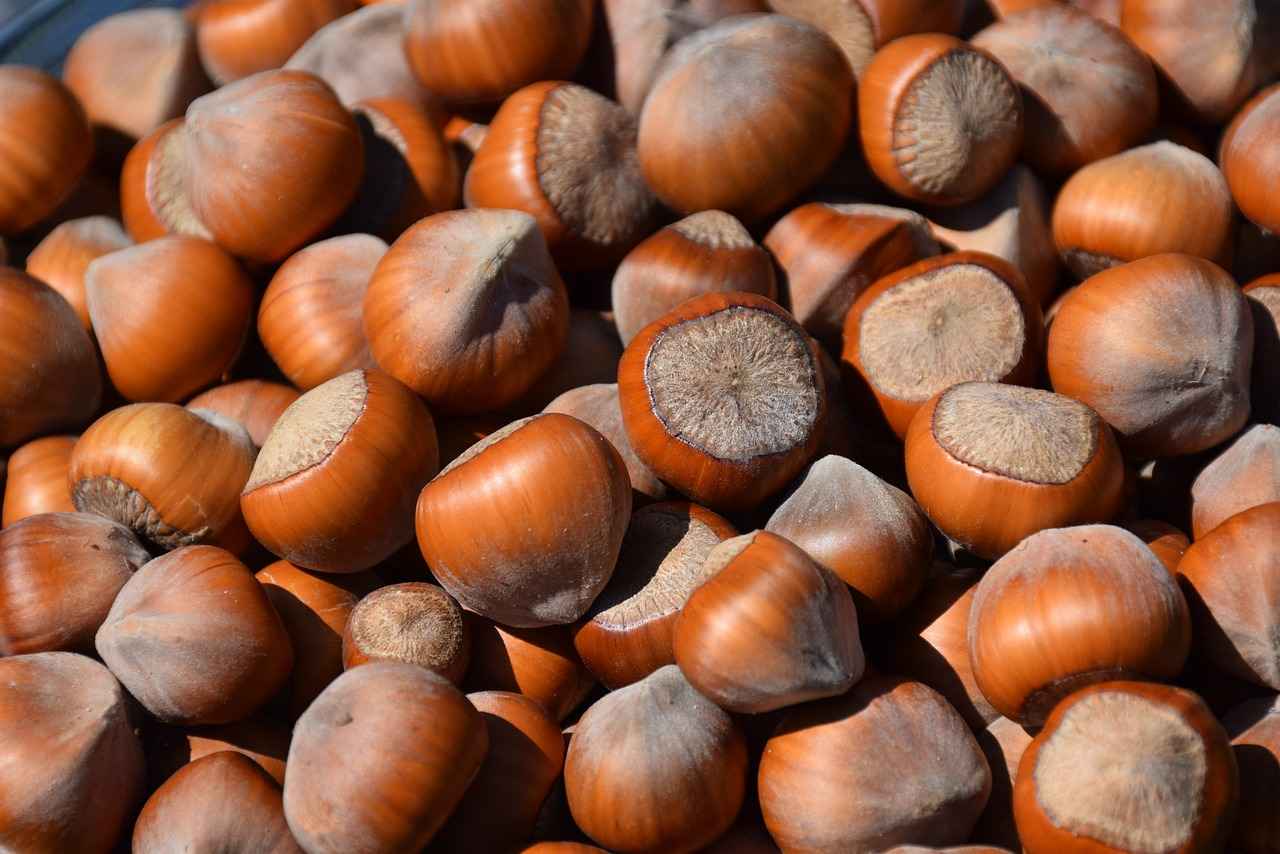
Can Chia Seed Meal Replace Other Ingredients?
Chia seed meal is not just a nutritious addition to your meals; it also serves as a versatile substitute for various cooking ingredients. Whether you’re looking to make your recipes more nutritious or accommodate dietary restrictions, chia seed meal can effectively replace eggs, flour, and even dairy in many dishes.
One of the most popular uses for chia seed meal is as an egg substitute in vegan and egg-free recipes. To create a chia egg, mix one tablespoon of chia seed meal with three tablespoons of water. Let the mixture sit for about 15 minutes until it forms a gel-like consistency. This chia egg can replace one egg in recipes for baking, such as cakes, muffins, and pancakes. The binding properties of chia seed meal help to hold the ingredients together while adding a boost of fiber and omega-3 fatty acids.
Chia seed meal can also serve as a partial substitute for flour in various recipes. When replacing flour with chia seed meal, it’s best to start with a ratio of 1:4—one part chia seed meal for every four parts of flour. This substitution works well in recipes for pancakes, smoothies, and even bread, where it can enhance the texture and nutritional profile without significantly altering the flavor.
For those avoiding dairy, chia seed meal can be used to create creamy textures in recipes. By blending chia seed meal with water, you can create a dairy-free milk alternative. This mixture can be used in smoothies, sauces, or baked goods. Additionally, chia seed meal can be incorporated into puddings as a thickening agent, providing a rich and creamy consistency without any dairy.
Adding chia seed meal to your smoothies and shakes is an excellent way to enhance their nutritional value. Simply mix in one to two tablespoons of chia seed meal to your favorite smoothie recipe. The meal not only adds fiber and protein but also helps to thicken the drink, creating a satisfying texture. This is particularly beneficial for those looking to increase their satiety and energy levels throughout the day.
Chia seed meal’s versatility allows for creative culinary experiments. Consider making chia seed meal energy bars by combining it with nuts, seeds, and natural sweeteners. These bars serve as a healthy snack option packed with nutrients. Additionally, chia puddings can be customized with various flavors such as vanilla, cocoa, or fruit purees, making them a delightful treat.
In conclusion, chia seed meal is a remarkable ingredient that can replace eggs, flour, and dairy in numerous recipes. Its health benefits and versatility make it a valuable addition to any kitchen. Whether you’re baking, cooking, or blending, incorporating chia seed meal can enhance both the nutritional content and flavor of your meals.
Using Chia Seed Meal as an Egg Substitute
Chia seed meal has emerged as a popular vegan egg substitute in the culinary world, particularly among those following plant-based diets. This remarkable ingredient not only provides a solution for egg replacement but also enhances the nutritional profile of various dishes. In this section, we will delve into the process of preparing chia eggs and explore their applications in your favorite recipes.
Chia eggs are made by mixing chia seed meal with water, allowing it to thicken and create a gel-like consistency that mimics the binding properties of eggs in recipes. This makes them an excellent alternative for baking and cooking, especially in recipes that require moisture and structure.
Preparing chia eggs is a simple process that requires minimal ingredients. Here’s how to do it:
- Ingredients: 1 tablespoon of chia seed meal and 2.5 tablespoons of water.
- Instructions:
- In a small bowl, combine the chia seed meal with water.
- Stir well to ensure there are no clumps.
- Let the mixture sit for about 5 to 10 minutes until it thickens to a gel-like consistency.
This chia egg can now be used as a substitute for one egg in recipes.
Chia eggs are incredibly versatile and can be incorporated into a variety of dishes:
- Baking: Use chia eggs in muffins, pancakes, and quick breads to add moisture and improve texture.
- Binding Agent: They work well in veggie burgers, meatballs, and other mixtures that require binding.
- Thickening Agent: Chia eggs can also function as a thickener in smoothies and puddings.
In addition to being a great egg substitute, chia eggs offer several health benefits:
- Rich in Nutrients: Chia seed meal is high in omega-3 fatty acids, fiber, and protein, making it a nutritious addition to your diet.
- Gluten-Free: For those with gluten sensitivities, chia eggs provide a safe alternative in baking.
- Easy to Prepare: The simplicity of making chia eggs makes them accessible for anyone looking to reduce or eliminate eggs from their diet.
To successfully incorporate chia eggs into your cooking, consider the following tips:
- Experiment with Ratios: Depending on the recipe, you may need to adjust the amount of chia seed meal and water to achieve the desired consistency.
- Combine with Other Ingredients: For recipes that require eggs for leavening, consider pairing chia eggs with baking soda or powder for optimal results.
- Test Small Batches: If you’re trying chia eggs for the first time, start with a small batch to see how they perform in your specific recipe.
In conclusion, using chia seed meal as an egg substitute is a fantastic way to embrace a vegan lifestyle while still enjoying your favorite dishes. With its numerous health benefits and ease of preparation, chia eggs are a valuable addition to any kitchen.
Integrating Chia Seed Meal in Smoothies and Shakes
can significantly boost the nutritional profile and texture of your favorite beverages. Chia seeds, known for their impressive health benefits, transform into chia seed meal when ground. This versatile ingredient is not only easy to incorporate but also enhances the overall experience of smoothies and shakes.
Chia seed meal is a powerhouse of nutrients. It is rich in omega-3 fatty acids, fiber, and protein, making it an excellent addition to your diet. By adding this meal to your smoothies, you can:
- Enhance Nutritional Value: Each tablespoon of chia seed meal packs a punch of nutrients, helping you meet your daily requirements.
- Improve Texture: Chia seed meal adds a creamy, thick consistency to smoothies, making them more satisfying.
- Boost Satiety: The fiber content aids digestion and keeps you feeling full longer, perfect for meal replacements or post-workout recovery.
Incorporating chia seed meal into your smoothies is straightforward. Here are some practical tips:
- Start Small: Begin with one tablespoon of chia seed meal in your smoothie. This allows you to gauge the texture and taste.
- Blend Thoroughly: Ensure that the chia seed meal is well-blended to avoid any grainy texture. A high-speed blender works best.
- Pair with Fruits and Vegetables: Combine chia seed meal with your favorite fruits like bananas, berries, or spinach for a nutrient-dense drink.
Here are a few smoothie recipes that highlight the versatility of chia seed meal:
- Berry Chia Smoothie: Blend together 1 cup of mixed berries, 1 banana, 1 tablespoon of chia seed meal, and 1 cup of almond milk for a refreshing drink.
- Green Power Smoothie: Combine 1 cup of spinach, 1/2 avocado, 1 tablespoon of chia seed meal, and 1 cup of coconut water for an energizing boost.
- Chocolate Chia Shake: Mix 1 cup of almond milk, 1 tablespoon of cocoa powder, 1 tablespoon of chia seed meal, and 1 banana for a delicious treat.
While chia seed meal is generally safe for consumption, there are a few considerations:
- Hydration: Chia seeds absorb liquid, so ensure you drink plenty of water when consuming them to prevent digestive discomfort.
- Allergies: Although rare, some individuals may be allergic to chia seeds. Monitor your body’s response when trying them for the first time.
- Portion Control: Due to their high fiber content, excessive consumption may lead to digestive issues. Stick to recommended serving sizes.
In conclusion, integrating chia seed meal into your smoothies and shakes not only enhances their texture but also provides a wealth of nutritional benefits. With its ease of incorporation and versatile flavor pairings, chia seed meal can be a delightful addition to your daily routine. Start experimenting with different recipes and enjoy the health benefits that come along with this superfood!
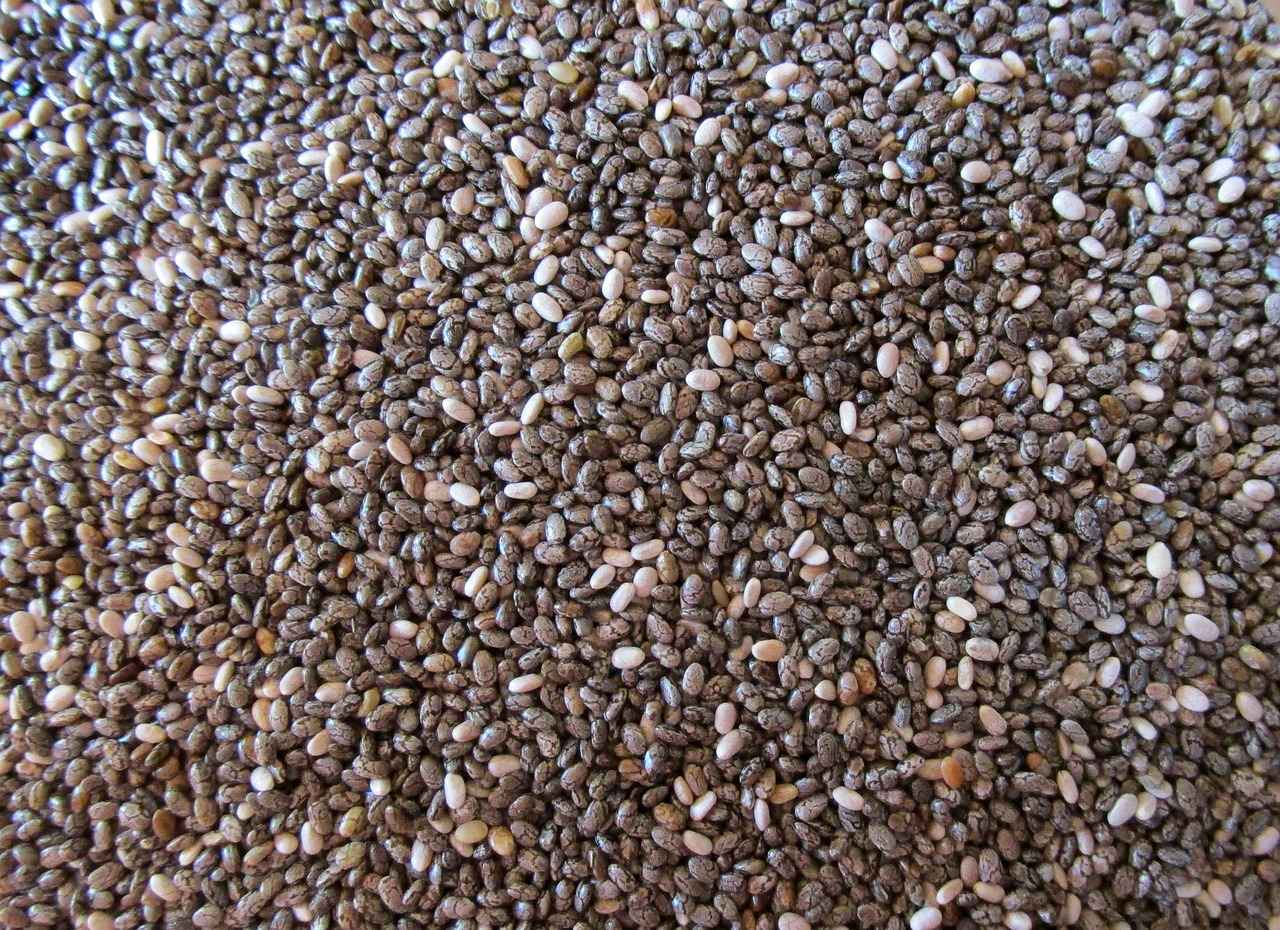
What Are Some Creative Recipes with Chia Seed Meal?
Chia seed meal is not just a nutritional powerhouse; it’s also incredibly versatile in the kitchen. With its nutty flavor and unique texture, it can elevate a variety of dishes. This section explores creative recipes that showcase the adaptability of chia seed meal, making it an essential ingredient in your cooking repertoire.
Energy bars are a convenient and nutritious snack, and incorporating chia seed meal can take them to the next level. To make your own chia seed meal energy bars, combine:
- 1 cup of oats
- 1/2 cup of nut butter (like almond or peanut)
- 1/4 cup of honey or maple syrup
- 1/4 cup of chia seed meal
- Your choice of nuts and dried fruits
Mix all the ingredients together, press the mixture into a baking dish, and refrigerate until firm. Cut into bars and enjoy a healthy snack on the go!
Chia pudding is a popular dish that can be easily customized to suit your taste. To create a basic chia seed meal pudding, combine:
- 1/4 cup of chia seed meal
- 1 cup of almond milk (or any milk of your choice)
- 1 tablespoon of sweetener (like honey or agave syrup)
- 1 teaspoon of vanilla extract
Mix the ingredients in a bowl and let it sit for at least 30 minutes or overnight in the refrigerator. For added flavor, consider these variations:
- Chocolate Chia Pudding: Add 2 tablespoons of cocoa powder.
- Berry Bliss Pudding: Mix in fresh or frozen berries before serving.
- Coconut Delight: Use coconut milk and top with shredded coconut.
Smoothies are an excellent way to incorporate chia seed meal into your diet. Simply add 1-2 tablespoons of chia seed meal to your favorite smoothie recipe. This addition not only enhances the nutritional profile but also adds a delightful thickness. Try blending:
- 1 banana
- 1 cup of spinach
- 1 cup of almond milk
- 1-2 tablespoons of chia seed meal
This combination creates a nutrient-rich drink that’s perfect for breakfast or a post-workout boost.
Chia seed meal can serve as a natural thickener for soups and sauces, providing a smooth texture without altering the flavor. To use it effectively, simply stir in 1-2 tablespoons of chia seed meal into your simmering soup or sauce. It will absorb liquid and thicken the mixture while adding fiber and nutrients.
Transform your morning pancakes by incorporating chia seed meal. To make chia seed meal pancakes, combine:
- 1 cup of flour (whole wheat or gluten-free)
- 1 tablespoon of baking powder
- 1/4 cup of chia seed meal
- 1 cup of milk (or plant-based milk)
- 1 egg (or chia egg for a vegan option)
Mix the ingredients until smooth and cook on a griddle until golden brown. Serve with your favorite toppings for a nutritious breakfast.
Incorporating chia seed meal into your meals can enhance both flavor and health benefits. With these creative recipes, you can easily enjoy the versatility of this superfood in your daily diet.
Chia Seed Meal Energy Bars
are not only nutritious but also a fantastic option for a quick snack or a post-workout boost. These bars are packed with essential nutrients, making them a popular choice among health enthusiasts. In this section, we will explore how to create your own energy bars at home, highlighting the benefits of using chia seed meal and providing a simple recipe to get you started.
Chia seed meal is a superfood that is rich in omega-3 fatty acids, fiber, and protein. These nutrients contribute to energy production, making chia seed meal an ideal ingredient for energy bars. Additionally, the fiber content helps keep you feeling full longer, which is beneficial for weight management.
- Heart Health: The omega-3 fatty acids found in chia seed meal support cardiovascular health.
- Digestive Wellness: High fiber content promotes healthy digestion.
- Energy Boost: The combination of protein and healthy fats provides sustained energy.
Making your own energy bars is easy and allows you to customize ingredients according to your taste preferences. Here’s a straightforward recipe:
Ingredients:- 1 cup of rolled oats- 1/2 cup of chia seed meal- 1/2 cup of nut butter (such as almond or peanut butter)- 1/4 cup of honey or maple syrup- 1/4 cup of chopped nuts or seeds (optional)- 1/4 cup of dried fruits (optional)- A pinch of salt
Instructions:
- In a large mixing bowl, combine rolled oats, chia seed meal, and salt.
- Add nut butter and honey (or maple syrup) to the dry ingredients, mixing until well combined.
- Fold in any optional ingredients like nuts or dried fruits.
- Press the mixture into an 8×8 inch baking dish lined with parchment paper.
- Refrigerate for at least 1 hour to set, then cut into bars.
Feel free to experiment with different ingredients to suit your taste. Here are some ideas:
- Flavor Variations: Add cocoa powder for a chocolate flavor or spices like cinnamon for warmth.
- Sweetness Levels: Adjust the amount of honey or maple syrup based on your preference.
- Protein Boost: Incorporate protein powder for an extra nutritional kick.
To maintain freshness, store your energy bars in an airtight container in the refrigerator. They can last up to two weeks, making them a convenient option for healthy snacking.
In summary, are a nutritious and delicious way to fuel your day. By making them at home, you have complete control over the ingredients, ensuring that you enjoy a healthy snack that meets your dietary needs. So, gather your ingredients and start creating your own energy bars today!
Chia Seed Meal Pudding Variations
Chia seed pudding has gained immense popularity as a healthy dessert option, and it’s no wonder why. This delightful dish not only provides a satisfying texture but also serves as a blank canvas for a variety of flavor combinations. With just a few basic ingredients, you can create a nutritious and delicious pudding that caters to your taste buds and dietary preferences.
Chia seeds are incredibly versatile and packed with nutrients, making them an excellent choice for a pudding base. When soaked in liquid, chia seeds expand and form a gel-like consistency, resulting in a creamy texture that is both filling and satisfying. This property allows for endless customization, making chia pudding an ideal choice for anyone looking to experiment with flavors.
The basic recipe for chia pudding is simple and requires only a few ingredients:
- 1/4 cup chia seeds
- 1 cup milk (dairy or plant-based)
- 1-2 tablespoons sweetener (honey, maple syrup, or agave)
- 1 teaspoon vanilla extract (optional)
To prepare, simply mix all ingredients in a bowl or jar, stir well, and let it sit in the refrigerator for at least 2 hours, or overnight for best results. This allows the chia seeds to absorb the liquid and thicken into a pudding-like consistency.
Once you’ve mastered the basic recipe, the real fun begins! Here are some creative flavor combinations to try:
- Chocolate Peanut Butter: Add 2 tablespoons of cocoa powder and 2 tablespoons of peanut butter to the basic mixture. Sweeten as desired.
- Berry Bliss: Mix in 1/2 cup of blended berries (strawberries, blueberries, or raspberries) for a fruity twist.
- Coconut Lime: Substitute coconut milk for regular milk and add the zest and juice of one lime for a tropical flavor.
- Matcha Green Tea: Stir in 1 teaspoon of matcha powder for an antioxidant boost and a unique taste.
- Spiced Pumpkin: Add 1/4 cup of pumpkin puree and 1 teaspoon of pumpkin spice for a seasonal treat.
To elevate your chia pudding further, consider adding various toppings:
- Fresh fruit: Sliced bananas, berries, or mango can add freshness and natural sweetness.
- Nuts and seeds: Chopped almonds, walnuts, or sunflower seeds provide crunch and additional nutrients.
- Granola: A sprinkle of granola can add texture and make your pudding more filling.
- Yogurt: A dollop of yogurt can add creaminess and a probiotic boost.
Absolutely! Chia pudding is perfect for meal prep. You can prepare several servings at once and store them in individual jars in the refrigerator. This makes it a convenient grab-and-go option for breakfast or snacks throughout the week.
In summary, chia pudding is not only a nutritious choice but also a versatile dish that can be tailored to suit any palate. With its simple base and endless flavor possibilities, it’s an excellent way to incorporate chia seed meal into your diet while enjoying a delicious treat.
Frequently Asked Questions
- What is chia seed meal?
Chia seed meal is simply ground chia seeds. It’s a nutrient-packed superfood that’s rich in omega-3 fatty acids, fiber, and protein. Using it in your diet can boost your overall health and add a nutty flavor to your meals!
- How can I use chia seed meal in my cooking?
You can use chia seed meal in various ways! It works great in baking as a substitute for flour or eggs, and it can also be added to smoothies for a nutritional kick. Plus, it can thicken soups and sauces without changing the flavor!
- Can chia seed meal replace eggs in recipes?
Absolutely! Chia seed meal can be mixed with water to create a chia egg, which is a fantastic vegan substitute for eggs in many recipes. Just mix one tablespoon of chia seed meal with three tablespoons of water, let it sit for a few minutes, and voila!
- What are the storage tips for chia seed meal?
To keep your chia seed meal fresh, store it in an airtight container in a cool, dark place, or even in the fridge. This helps preserve its nutrients and prevents it from going rancid!
- Are there any health benefits to using chia seed meal?
Yes! Chia seed meal is loaded with fiber, which aids digestion, and omega-3 fatty acids that are great for heart health. Incorporating it into your meals can support weight management and overall wellness!
